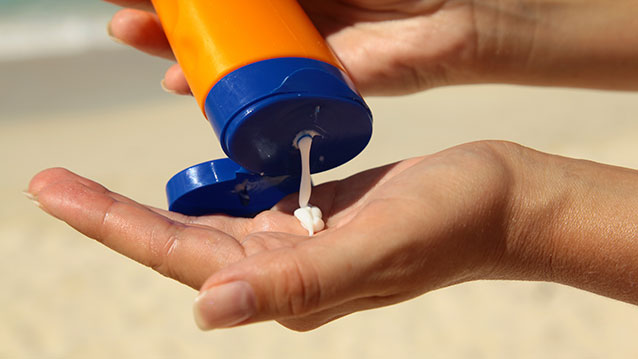CHICAGO - About 40 percent of the top selling sunscreens on Amazon.com don’t meet the American Academy of Dermatology's guidelines for sunscreens. This was largely due to a lack of water or sweat resistance, according to a new Northwestern Medicine study.
The study also found consumers spend up to 3,000 percent more for products that provide the same sunscreen protection as lower-cost sunscreens.
Northwestern investigators wanted to identify high performing products that are affordable and popular to know what to recommend to their patients and, hopefully, increase the likelihood of their using it.
Sunscreen use is low for adolescents and adults. And, if they do wear sunscreen, they don’t use enough or apply it frequently enough. Cost and “cosmetic elegance” of the product -- how it feels on the skin, color or scent -- may be factors.
40% of top selling sunscreens don't meet the American Academy of Dermatology guidelines
“We are often asked to recommend sunscreens, and we wanted to know what consumers prefer,” said lead study author Dr. Steve Xu, a resident in dermatology at Northwestern University Feinberg School of Medicine. “This way we are suggesting popular products they will actually use that will protect them.”
“You don’t want to wear a chalky, greasy, terrible-smelling product, even if your dermatologist recommends it, “ Xu said. “This gave us insight into what consumers prefer, so it can guide our recommendations and be cost conscious.”
Xu said he was surprised at the 3,000 percent difference in price for products that provided basically the same protection.
To identify the most popular sunscreens, investigators looked at the top rated 1 percent of the 6,500 sunscreens with four or more stars sold on Amazon.com. They came up with the 65 top-rated products. The goal was to identify high performing products that are affordable and popular to encourage adherence to sunscreen use.
Their median price was $3.32 an ounce; median SPF was 35; 92 percent had broad-spectrum coverage claims and 62 percent were labeled as water or sweat resistant. The cheapest sunscreen was 68 cents an ounce and the most expensive was $24 an ounce.
The study was published July 6 in the journal JAMA Dermatology.
Sunscreens are particularly important for individuals with certain dermatological conditions such as transplant patients who have photosensitive skin due to the drugs they must take or individuals with certain dermatological conditions, Xu said.
“Dermatologists should have a voice in consumer choices when it comes to skin health, a voice that takes the patients’ best interests at heart and is not influenced by marketing claims,” Xu said.
Dr. Roopal Kundu, Northwestern Medicine dermatologist and associate professor of dermatology, is senior author.


